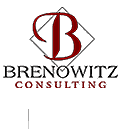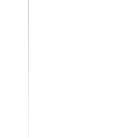


|
Issue
# 2 - Leadership
In this issue on Leadership, you will find: 1. An introduction to the topic of Leadership in Today's Environment. 2. A review of "The Leader of the Future" edited by Hesselbein, Goldsmith, and Beckhard 3. Pointers to additional information on this topic. ________________________________________________________ 1. LEADERSHIP IN TODAY'S ENVIRONMENT Leadership has been discussed, debated, researched, exalted, and debunked practically forever. Countless books and articles have been written on the subject. Still, it is something of a mystery how best to lead organizations, especially postmodern ones. These organizations are increasingly characterized by overwhelming size and complexity, and the need to forge partnerships, alliances, deals, teams, and other collaborative and interdependent work arrangements. So what challenges face leaders who find themselves in this rapidly changing and demanding environment? First is the need to set the agenda of the organization--its scope, boundaries, and focus. In a world of increasing possibilities, it is the work of the leader to determine the organization's purpose (why this organization exists), mission (what it will accomplish or contribute), and vision (what the organization will look like and how its stakeholders will be affected by the mission's success). This determines the boundary of the organization. The leader must understand and manage the relationships within the boundary, as well as the appropriate interface between the organization and those outside the boundary. It is also the leader's responsibility to help all involved align their vision to the realization of the organization's mission. Second is the need to access the resources required to get the job done. This is particularly challenging in the face of organization cultures and world economic climates that are driven by attitudes of scarcity, do-more-with-less, and demands for short-term results. Third is the need to attract and retain a workforce that embodies the necessary knowledge, experience, passion, and loyalty to "out-muscle" the competition. Good leaders develop a work environment that enables creativity and innovation while reducing the drain of energy into unproductive pursuits like internal competition, win/lose thinking, anxiety about looking bad, fear of making mistakes or appearing foolish, turf battles, and values conflicts. The leader must also manage the performance of individuals, teams, and the entire organization. So, you say, nothing new here--what's the real challenge? We believe the most significant challenge facing leaders today is the requirement that they successfully meet all other challenges in ways that are collaborative, interdependent, and virtual. It is the ability to orchestrate this combination of conditions that differentiates varying degrees of success. What holds organizations together today is arrangements that are less formal. This requires that both organization structures and personal styles continually adapt. But the reality is that all of us were raised, socialized, and rewarded in the paradigm of steep hierarchies, bureaucracies, and autocratic, control-driven approaches to leadership. Overtly or covertly, in most organizations this is till the way. Even small companies and start-ups struggling with how to evolve their infrastructures and organization cultures frequently default to bureaucratic structures, legalistic solutions, reliance on policies, and command-and-control management. What, then, must leaders be able to do? What attributes must they embody? * Because the vast majority of people in organizations are still inclined toward the old command-and-control paradigm, leaders must be able to conceptualize, articulate, and create an organizational model characterized by big picture thinking, an emphasis on long-term results, and a systems approach to the organization and its relationship to its stakeholders. * Leaders must recognize that control is an illusion and that high performance is voluntary. This means organization structures must tap into and value each person's unique characteristics. Organizations must provide an environment in which people will freely offer what they know and think; engage in random acts of innovation, creativity, and synergy; and collaborate rather than compete. This means that conflict, disagreement, and discomfort should be expected, because that is what happens when people and ideas are in process. * Good leaders know that relationships matter. When people are treated with respect, when they are truly listened to, when commitments made to them are kept, when their contributions are valued, when they see that they make a difference to the well-being of the enterprise, they freely give their dedication and loyalty--and their best efforts and high performance. Without this people instead give compliance, passive resistance, and minimal effort. * In a world that is increasingly chaotic and in organizations that are extraordinarily complex, the only real anchor is one's personal sense of purpose, values, and integrity. These are what define our relationship to our environment. The best leaders know that: vision, purpose, and values fuel the motivation for leadership, enrollment and alignment to shared values and purpose are the fuel for synergy and momentum toward the vision and goals, and self-awareness, knowledge, and understanding are the fuel for individual learning and renewal, emotional competence, and the ability to model-- to "walk the talk". In the end it's not a question of whether or not the people in your organization will adopt the model you set. It's a matter of which model you want them to follow. The way leaders change their organizations is by changing themselves. _______________________________________________________ 2. "The Leader of the Future" edited by Frances Hesselbein, Marshall Goldsmith, and Richard Goldsmith (Jossey-Bass, 1996) "The Leader of the Future" is a book about the future of our businesses, our organizations, and our society. And it's about your role as a leader in that future. The book spotlights the ideas of a remarkable set of visionary thinkers providing us with new insights and directions critical to becoming effective leaders of the organizations of tomorrow. Management guru, PETER DRUCKER reminds us that the most effective leaders know four simple things: 1. The only definition of a leader is someone who has followers. 2. An effective leader is not someone who is loved or admired. Popularity isn't leadership; results are. 3. Leaders are highly visible. They set examples. 4. Leadership is not rank, privileges, or money. It is responsibility. Consultant and speaker GIFFORD PINCHOT believes that as the percentage of knowledge workers in an organization increase, more leaders are needed. Important work that needs to be done includes innovation, seeing things in new ways, and responding to customers by changing the way things are done. By replacing hierarchy with more indirect methods of leadership, you can allow greater freedom, better allocation of resources, and a strong force for focusing on the common good. Offering workers more room to lead creates an organization ready to meet tomorrow's challenges. According to author and consultant STEPHEN COVEY, leaders of the future will be the people who create cultures or value systems based on principles. Creating such cultures will be tremendously exciting for future leaders, but only if they have the vision, courage, and humility to learn and grow. He believes you can break principle-centered leadership into three basic activities: 1. Pathfinding 2. Aligning 3. Empowering Thanks to changes in technology, demographics, and economics, consultant and author DOUGLAS SMITH believes that the omniscient leader is obsolete. Leaders will continue to set direction, make tough decisions, and inspire commitment. But getting good performance now requires relying on the capacities and insights of others. Leaders thus need to understand when the best choice is to follow. Other contributors include Charles Handy, Peter Senge, Ed Schein, Ken Blanchard, Rosabeth Moss Kanter, James Kouzes, and Barry Posner. "The Leader of the Future" is a book for leaders in all sectors: business, nonprofit, and government. It can be read as a text on the subject as it informs and stimulates. It can also be read as a call to action prompting us to ask, "In my organization, what could I do that would make a difference? How can I truly set an example?" It then helps motivate us to do it. _____________________________________________________________ 3. Web sites and Other Resources we've found about this topic include: Center for Creative Leadership <http://www.ccl.org> CCL offers an extensive selection of leadership development programs. They also sponsor research, publish, and operate a leadership-focused bookstore on their website. You can subscribe to their newsletter, Leadership in Action, by contacting Jossey-Bass Publishers @ 888-378-2537 or <http://www.josseybass.com> Peter F. Drucker Foundation for Non-Profit Management <http://www.pfdf.org> Don't be put off by the not-for-profit name of this organization--Drucker is one of the best (and best known) in the field. They publish an excellent quarterly newsletter called Leader-to-Leader that contains articles from such well known authors as Margaret Wheatley, Max DuPre, Warren Bennis, Peter Senge (and of course, Peter Drucker). Many of these articles are available on-line. A word on Leadership Development: Warren Bennis says, "Here's the deal: learning to be a leader is virtually the same process as becoming an integrated and healthy person.... What that means is that when we're talking about "growing leaders", we're inevitably involved in personal stuff, personal transformation." He goes on to say that he is skeptical about the prospects for "teaching" leadership but advocates coaching as an approach that works. (A Conversation with Warren Bennis, <http://www.behavior.net/column/bennis/>) In her doctoral dissertation, Tracy reached similar conclusions. (Revisiting the Question of Born vs. Made: Toward a Theory of Development of Transformational Leaders. (1986). Unpublished doctoral dissertation. Santa Barbara, CA: The Fielding Institute.) Some other organizations/programs that focus on this personal factor in their approach to leadership development include: NTL Institute for Behavioral Science <http://www.ntl.org> The Leader Lab program at the Center for Creative Leadership <http://www.ccl.org> Leadership Week at the Covey Leadership Center <http://www.covey.com>
|
||||||||
|
||||||||